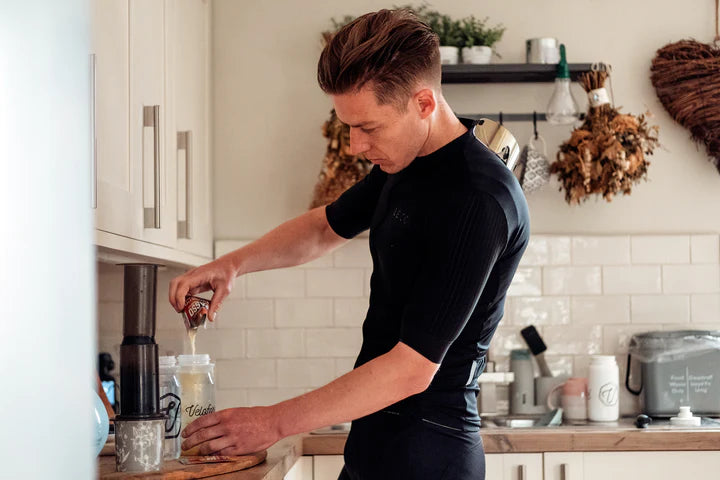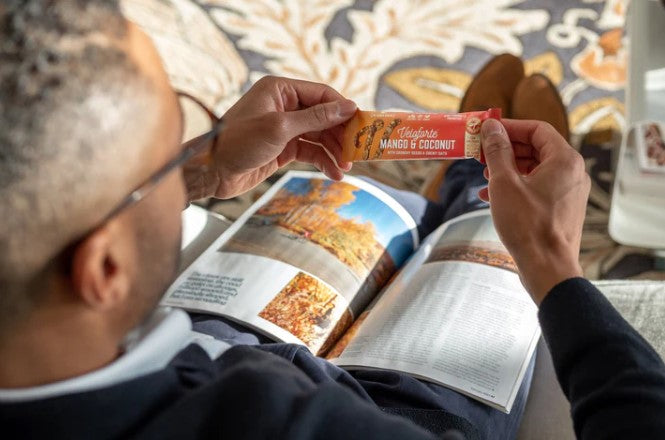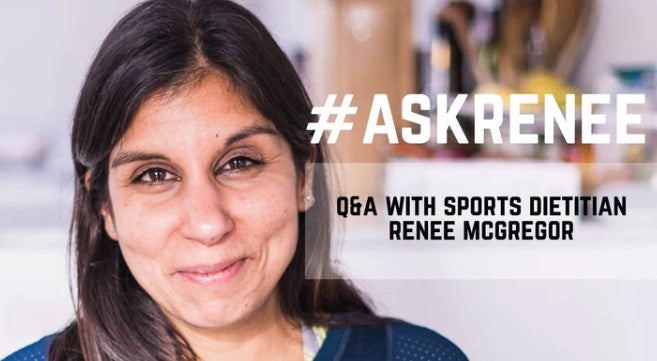What to eat before a workout (and what to avoid)

We’ve all had those long workouts where a lack of energy makes every move feel like wading through treacle, or gone to sessions after a big meal and been too sluggish to hit any targets. The fact is, fuelling correctly before a workout can be the difference between a session to feel proud of and a session you’d rather forget. And when you’re putting in the training hours, the last thing you want is to scupper all your hard work with poor nutrition.
Getting your pre-workout fuelling right, understanding what to eat before exercising — and when to eat it — takes trial and error. What works for one might dampen performance for another.
But there are a few common guidelines you can follow. Here’s everything you need to know about pre-workout nutrition, so you can push for that optimum performance.
Top 5 tips on what to eat before exercising and what to avoid
A healthy active diet should include a good balance of the three macronutrients – carbohydrates for energy, protein for muscle recovery and fats for energy and cell growth – as well as plenty of vitamin and mineral-rich fruit and vegetables.
If you’re eating well, limiting highly processed foods and getting your five (or more) a day, you don’t need to supplement your diet with shakes and sugary drinks in order to exercise at your best. In fact, real food is king and if you follow these simple guidelines, it’s easy to ensure you have enough energy to fuel every session.

1. Don’t Cut Carbs
Carbohydrates are the body’s primary energy source. They’re broken down into glucose in the bloodstream and stored as glycogen in the liver and muscles, which our body then uses to fuel activities such as running, cycling, HIIT or weightlifting.
The British Nutrition Foundation recommends those exercising between five and seven hours a week should aim for 5-6g of carbohydrates per kilogram of body weight daily. So if you weigh in at 11 stone, just under 70kg, that’s 350-420g of healthy carbs a day. To give you an idea of what that means in real food, a medium serving of pasta has 76g of carbs and wholegrain rice, 53g.
Carbohydrates are best digested when they’re spread out throughout the day, so try to eat some form of complex carbs with most meals. Complex carbs, found in whole grain foods such as brown rice, beans, potatoes and vegetables, take longer to break down in the body than simple carbs and are a great source of slow-release energy. Ideally, these should be eaten two to three hours before a session to give your body time to digest.
For a quicker energy hit, reach for the simple carbs. Simple carbs are broken down in the body quickly so you get a faster energy release. A banana or Veloforte energy bar with natural dried fruits is the ideal snack around an hour before a session.
2. No need to carb load every day
Before long sessions, such as a marathon or triathlon, you’ll want to increase your carb intake to top up your glycogen stores, giving you the energy to go the distance. For your everyday workouts though, there’s no need to be chowing down on pasta every meal. If you follow the guidelines above, your regular diet should provide you with plenty of carbs to fuel your sessions.
3. Experiment to find your ideal pre-workout food
Everyone’s body reacts differently to different foods so play around with what you’re eating (and the timings) to find what works best for you. This is particularly important if you’re training for a race. Use your longer training sessions to experiment with what you plan to eat the night before and the morning of your race to make sure there are no digestive issues on race day.

4. Avoid spicy food and too much fibre
If you’re prone to digestive discomfort, avoiding anything too spicy may save you searching desperately for a bush mid-session. Capsaicin, which is found in chillies and spices like cayenne, is an irritant to the body (think how much it burns when you get chilli in your eye) and can aggravate the stomach lining causing diarrhoea. Get this wrong and we guarantee it’s not going to be pleasant.
Too much fibre too close to exercising can also have unwanted effects. Fibrous foods such as whole grains, fruit and veg are generally healthy and leave you feeling fuller but they can also make you need the loo. Try and avoid eating anything too fibrous such as high-fibre breakfast cereals prior to your workouts or on race day and go for low-fibre alternatives like oats and bananas.
5. Make sure you hydrate
Working out when you’re not adequately hydrated makes everything seem much tougher, you fatigue more easily, are prone to muscle cramps, can feel faint or dizzy and your heart has to work harder to pump blood around your body. Not good.
The NHS recommends drinking around 1.2 litres of water a day but if you’re exercising, it’s hot or you’re a big sweater, you may find you need more. To ensure you’re well hydrated try and drink fluids at regular intervals throughout the week – downing a big bottle of water just hours before you work out won’t make up for poor hydration in the previous days, it’ll just be flushed out by your kidneys and mean added loo stops. Always take some water with you as well and drink to thirst.
When is the best time to eat before a workout?
While some iron-stomached athletes might be able to head out exercising after eating a Sunday roast with no ill effects, most of us need slightly longer to digest. If you’re eating a big pre-workout meal you should aim to do this two to four hours before you lace up to give your body time to break it down. For lighter meals, such as your lunchtime sandwich, you’ll probably find two hours is long enough.
If you need an energy boost between your last meal and your workout, or you want to eat something light before an early morning jog, try a healthy small snack containing simple carbs for energy one hour to 30 minutes before you start your workout. Half a Veloforte bar is a great option — save the rest for afterwards — or a couple of our soft and squishy, 100% natural energy chews.

The best foods to eat for every type of session
All workouts are not created equal. The amount of energy you need for a 20-mile marathon training run will differ from your requirements for a steady 5k or likewise a 4 hour ride will be different to a 40 minute turbo session. Here’s what to eat before every type of session to maximise your performance.
Easy session, up to 60 minutes
Shorter, easy sessions are the bread and butter of many training plans – but you don’t need to be eating all the bread and butter to do them. It’s likely you’ll have enough fuel in the tank from your last meal to get round easy sessions as your glycogen stores can last for up to 90 minutes during steady exercise.
If you feel the need of a pre-workout energy hit, go for a low-fibre snack containing simple carbs such as a banana around an hour to 30 minutes beforehand. Our Energy Chews are also a great way to get energy into the body, fast.

Sessions over 60 minutes
If you’re working out longer than 60 minutes, you may find your energy levels begin to dip as your glycogen stores deplete. Avoid the wall – that bonking feeling when your glycogen stores are zapped and there’s nothing left in the tank – by fuelling your sessions with a pre-workout snack or a small, easily digestible meal that contains around 30g of carbohydrate. A sweet potato and tuna, porridge with nut butter, a bagel and hummus are all good. Or a Veloforte Avanti bar, which contains 40g of dual-source carbs and some helpful natural electrolytes.
On longer sessions, so anything over 90 minutes, you’ll benefit from taking on fuel for energy as you exercise. Simple carbohydrates offer the quickest hit, and it’s best to fuel earlier rather than later as your body needs time to process the carbohydrates — it can take up to 15 minutes to feel the effects depending on the person.
One of the most compact and efficient ways to refuel is with an energy gel — but the synthetic offerings from most brands leave a lot to be desired. Luckily, Veloforte's energy gels harness only natural ingredients to delivery just as many high quality carbs, in half the size, with zero additives. They taste great too. Pop some in your pocket to eat on the move.

Interval training sessions
During any workout, you burn both fat and carbohydrates but the ratio of each change with the intensity. During high intensity sessions, you use a higher portion of glycogen than on low intensity sessions, so even though the workout may be shorter, you’ll be burning through that energy. Make sure you eat well during the day and take on a simple carb snack around an hour pre-workout or you’ll be struggling on those final reps. And definitely avoid high-intensity workouts on a full stomach.
Early morning workouts

If you like to get your workout out of the way first thing, you’ll be familiar with the breakfast dilemma. Get up early and have breakfast or enjoy an extra hour in bed? If you’re working out for less than an hour, go ahead and keep hitting snooze, your body should have enough stored glycogen to get you through on an empty stomach.
If you’re heading out on a long workout, you’re going to benefit from putting something easily digestible in the tank. If you can’t bear to get up an hour earlier to eat some porridge or a bagel for breakfast before you get out the door, try a Veloforte Avanti bar to give you some quickly absorbed energy and top it up on the go with the fuel that works best for you mid-workout. If you find you’re in need of a caffeine boost on an early morning session, our Doppio gels deliver 75mg of natural caffeine as well as energy-boosting carbs.
Race day
Just like you wouldn’t run a marathon in brand new shoes (we hope!), don’t try anything new nutritionally on race day or the day before. Training for an event is not just about putting one foot in front of the other, it’s also your chance to work out a nutrition strategy. Experiment with different foods throughout your training and try eating at different times before your workout to find what works for you, doesn’t upset your stomach and gives you nice, even energy.
If you’re racing in a different country, pack your tried and tested food and nutrition favourites – in your carry on luggage if you can – in case they’re unavailable there. Now is not the time to jeopardise that PB by sampling the local triple-hot jalapeno goulash or picking up random products from the expo.

What to eat after your workout
Now that you’ve got your pre-workout nutrition sorted, you might also want to think about what should you be eating afterwards? And here are three simple steps to good post-session fuelling.
- Make it timely: Aim to eat something within 30 minutes of a long or hard session to keep your blood sugar levels stable and kickstart the recovery process. One of our protein recovery shakes are perfect to replenish carbs and provide protein for muscle repair - Nova Recovery Shake.
- Eat protein and carbs: Eat foods that are high in carbs to replenish your glycogen stores and combine with protein to help your muscles repair and recover. Some good options would be yogurt with fruit and nuts, a wholemeal bagel with peanut butter or a natural food bar such as the Veloforte Forza Protein bar which has the ideal ratio of Carbohydrate to Protein for recovery, 3:1 or our Cappo Anytime Protein Shake.
- Replace your salts: If you’ve been working out in hot weather or sweating excessively you may need to replace some of the sodium you’ve lost. Try the vegan Veloforte Avanti electrolyte energy bar which contains sodium to help prevent cramps and stimulate your thirst so you rehydrate fully.



